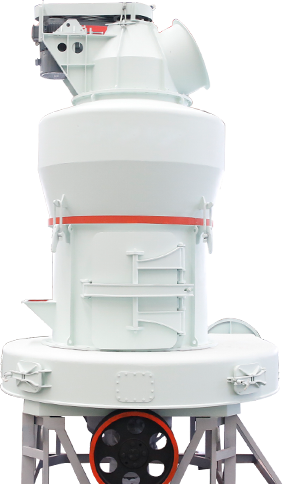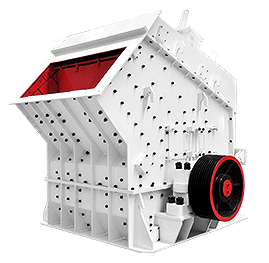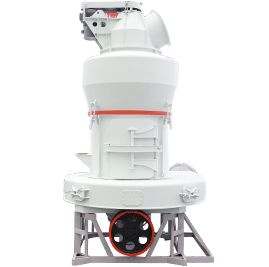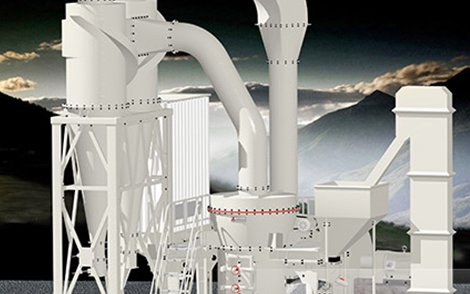الحار منتجات
ملكنا الإخبارية
grinding media consumption in cement production

Resistance to Grinding and Cement Paste Performance of
2021年4月19日 Estimating resistance to grinding of cement blends from the mixture’s composition would aid in developing optimization models to reduce energy consumption for cement production. However, most studies either focus on determining the overall

Analysis of material flow and consumption in cement
2016年1月20日 The results show that approximately 2.48 t, 4.69 t, and 3.41 t of materials are required to produce a ton of the product in raw material preparation, clinker

(PDF) Analysis of material flow and
2015年8月1日 The results show that approximately 2.48t, 4.69t, and 3.41t of materials are required to produce a ton of the product in raw material

Cement grinding optimisation ScienceDirect
2004年11月1日 The estimate for the world energy consumption for cement production is 18.7 TWh which is approximately 0.02% of total world energy consumption per year. The

The influences and selection of grinding chemicals in
2014年10月15日 Today, grinding chemicals are reported as capacity improvers or in some cases strength enhancers. Cement grinding operations demand these chemicals in order

Cement Analysis IEA
Key strategies to cut carbon emissions in cement production include improving energy efficiency, switching to lower-carbon fuels, promoting material efficiency (to reduce the clinker-to-cement ratio and total

Energy-Efficient Technologies in Cement
2016年10月5日 Grinding tests by the F.L.Smidth company have shown that Cemex ® produces cement which meets the requirements of the standard specifications while enabling substantial savings in grinding

Overview of cement grinding: fundamentals,
2017年5月19日 Grinding is an essential operation in cement production given that it permits to obtain fine powder which reacts quickly with water, sets in few hours and hardens over a period of weeks....

Cement mill Wikipedia
2023年2月21日 A cement mill (or finish mill in North American usage) is the equipment used to grind the hard, nodular clinker from the cement kiln into the fine grey powder that is cement. Most cement is currently ground

Consumption of steel grinding media in mills A review
2013年8月1日 Grinding media consumption is one of the major operating costs in mineral processing industry; it was found that the consumption of media in ball mills during

Resistance to Grinding and Cement Paste Performance of
2021年4月19日 Estimating resistance to grinding of cement blends from the mixture’s composition would aid in developing optimization models to reduce energy consumption for cement production. However, most studies either focus on determining the overall grindability of the blends or optimizing material composition considering only the final

Energy and cement quality optimization of a cement
2018年7月1日 The size of the grinding media and its distribution is one of the major parameters influencing the grinding performance of the mill. Energy consumption assessment in a cement production plant. Sustain. Energy Technol. Assessments, 10 (2015), pp. 84-89. View PDF View article Google Scholar [9]

(PDF) Analysis of material flow and
2015年8月1日 The results show that approximately 2.48t, 4.69t, and 3.41t of materials are required to produce a ton of the product in raw material preparation, clinker production, and cement grinding stages

Cement grinding optimisation ScienceDirect
2004年11月1日 The current world consumption of cement is about 1.5 billion tonnes per annum and it is increasing at about 1% per annum. The electrical energy consumed in cement production is approximately 110 kWh/tonne, and around 40% of this energy is consumed for clinker grinding.

The influences and selection of grinding chemicals in
2014年10月15日 Today, grinding chemicals are reported as capacity improvers or in some cases strength enhancers. Cement grinding operations demand these chemicals in order to improve its energy efficiency. As it is a dry grinding environment, more benefits are observed compared to wet grinding applications.

Review on energy conservation and emission reduction
2022年12月1日 The energy consumption in cement production depends on the process through which it is manufactured. The dry process of cement manufacturing uses more electrical energy than the wet process, while the wet process uses more thermal energy than the dry process. An improved grinding media saved 0.02–0.068 GJ/t of thermal

Cement grinding optimisation ScienceDirect
2004年11月1日 The current world consumption of cement is about 1.5 billion tonnes per annum and it is increasing at about 1% per annum. The electrical energy consumed in cement production is approximately 110 kWh/tonne, and around 40% of this energy is consumed for clinker grinding. There is potential to optimise conventional cement clinker

PROCESS CONTROL FOR CEMENT GRINDING IN
2017年10月27日 The power ingesting of a grinding process is 50-60% in the cement production power consumption. The Vertical Roller Mill (VRM) reduces the power consumption for cement grinding approximately 30-40% associated with other grinding mills. The process variables in cement grinding process using VRM are strongly nonlinear and

Mutual compatibility of superplasticizers (PC, SNF),
In the production of Portland cement, GA are added in small amounts in the range of 0.01 to 0.1% by weight of cement, according to the EN 197–1 standard. Their use allows for a reduction in energy consumption, as a larger specific surface area of the material is obtained in a shorter milling time.

Energy consideration in cement grinding FICEM
2011年12月6日 Energy consumption in cement production o ~ 2 % of the global primary energy, or 5 % of global industrial energy, is consumed in cement production, of which: 85 90 % is thermal energy10 15 % electricity; o ~ 25 % of cement cost is due to energy costs, of which: o ~ 50 % is for electricity, mainly for grinding.

Resistance to Grinding and Cement Paste Performance of
2021年4月19日 Estimating resistance to grinding of cement blends from the mixture’s composition would aid in developing optimization models to reduce energy consumption for cement production. However, most studies either focus on determining the overall grindability of the blends or optimizing material composition considering only the final

Energy and cement quality optimization of a cement
2018年7月1日 The size of the grinding media and its distribution is one of the major parameters influencing the grinding performance of the mill. Energy consumption assessment in a cement production plant. Sustain. Energy Technol. Assessments, 10 (2015), pp. 84-89. View PDF View article Google Scholar [9]

The influences and selection of grinding chemicals in
2014年10月15日 Today, grinding chemicals are reported as capacity improvers or in some cases strength enhancers. Cement grinding operations demand these chemicals in order to improve its energy efficiency. As it is a dry grinding environment, more benefits are observed compared to wet grinding applications.

Review on energy conservation and emission reduction
2022年12月1日 As a result, global cement consumption declined 0.23% in 2020 compared to 2019, but per capita demand remained stable at 540 kg. In 2020, China achieved a rise of 2.17% year-over-year, with volumes reaching 2377.68 Mt. Outside of China, the worldwide market declined by 3.29%.

Cement grinding optimisation ScienceDirect
2004年11月1日 The current world consumption of cement is about 1.5 billion tonnes per annum and it is increasing at about 1% per annum. The electrical energy consumed in cement production is approximately 110 kWh/tonne, and around 40% of this energy is consumed for clinker grinding. There is potential to optimise conventional cement clinker

Energy efficiency of cement finish grinding in a dry batch
2006年3月1日 Fig. 2 presents the evolution of the production of surface area per unit grinding energy (cm 2 /J), which is an indicator of the energy utilization, versus the specific energy. The cement clinker fraction (2–1.4 mm) is taken here as an example. The figure reveals that the energy utilization decreases with increasing energy consumption.

PROCESS CONTROL FOR CEMENT GRINDING IN
2017年10月27日 The power ingesting of a grinding process is 50-60% in the cement production power consumption. The Vertical Roller Mill (VRM) reduces the power consumption for cement grinding approximately 30-40% associated with other grinding mills. The process variables in cement grinding process using VRM are strongly nonlinear and

Breakthrough in Clinker Grinding Massachusetts
2012年11月8日 cement production is for material size reduction. Increasing the efficiency of particle size reduction could have a large impact on energy consumption in the cement industry. Current estimates of grinding power requirements used for equipment sizing are indirect indications often based on industrial experience or scaled up from laboratory tests.

Mutual compatibility of superplasticizers (PC, SNF),
The compatibility of grinding aids (TEA/glycol) and superplasticizers (PC/SNF) in low- and high-C 3 A cements, as well their mutual effect on the properties of pastes and fresh/hardened mortars were evaluated. The influence of various surfactant combinations on the hydration rate, flowability, compressive strength, rheology, surface tension and air

Energy consideration in cement grinding FICEM
2011年12月6日 Energy consumption in cement production o ~ 2 % of the global primary energy, or 5 % of global industrial energy, is consumed in cement production, of which: 85 90 % is thermal energy10 15 % electricity; o ~ 25 % of cement cost is due to energy costs, of which: o ~ 50 % is for electricity, mainly for grinding.
gold mining equipment edmonton edmonton area
York Potash and Parish training
تركيب الكسارة المحورية في كسارة
منبع گیاهی صفحه نمایش با کیفیت بالا
مصنع لكسارة الصخور
ما هو الفحم القاري والفرعي
تخطيطي لكسارة الصخور المحمولة
crawler crusher from germany pdf-Crawler jaw crusher for iron mining Germany
تعدين المحجر المركزي في المملكة العربية السعودية
hammer mills price uk
المصنعين والموردين من الأجهزة في الصين
blow out tower iodine plant
مصنع لتصنيع الرماد المتطاير في chitradurga
stone crusher south korea for sale
920 workers affected by cement plant shutdown dangote
DXN sea crystal salt grinding machines in portugal
铝矿生产线工艺流程
dolomite stone processing machine in sri lanka
مصنع غسيل رمل السيليكا Sindhudurg
يحتاج محتوى الحديد في مصنع للاسمنت
natural stone carving lion statue
تصميم صمامات خبير
what machinery is required for iron ore mining-what equipment needed for mining iron
كسارة واحدة ذروة خلاط وبيليتر
مطحنة خام في صناعة الأسمنت
hammer mill copy papers manufacturer-Hammermill Color Copy Paper
حول لدينا
تأسست شركة Henan Lrate للعلوم والتكنولوجيا المحدودة التي تصنع معدات التكسير والطحن الكبيرة والمتوسطة الحجم في عام 1987. وهي شركة مساهمة حديثة مع البحث والتصنيع والمبيعات معًا.
على مدار أكثر من 30 عامًا ، تلتزم شركتنا بنظام الإدارة العلمية الحديث والتصنيع الدقيق والريادة والابتكار. الآن أصبحت LIMING رائدة في صناعة تصنيع الآلات المحلية والخارجية.











 2021/07/20
2021/07/20